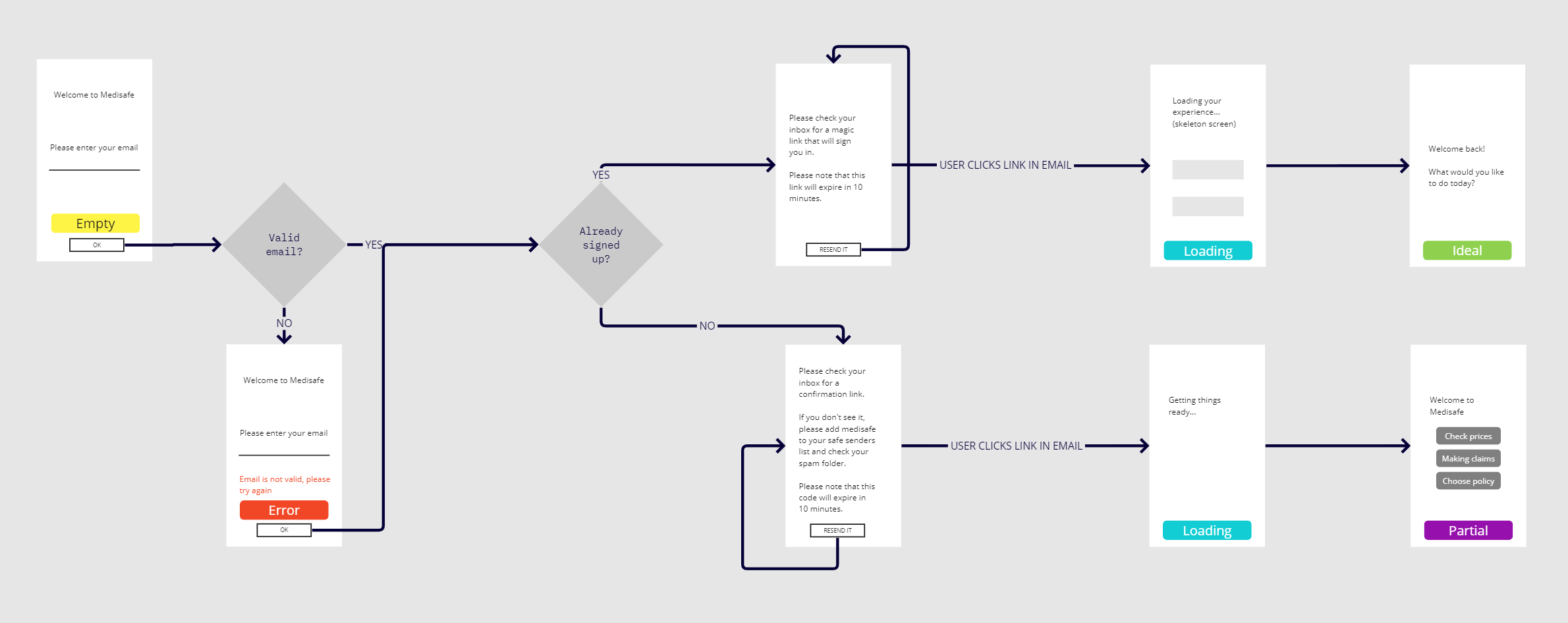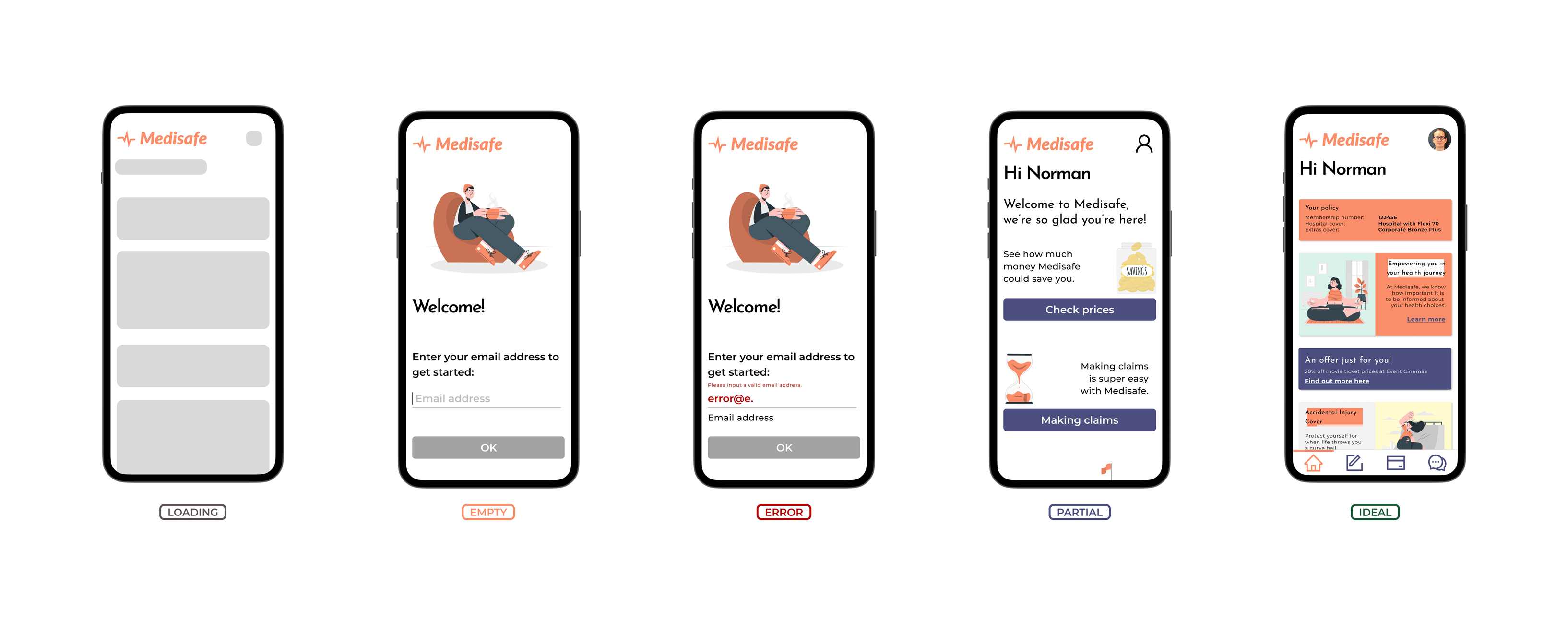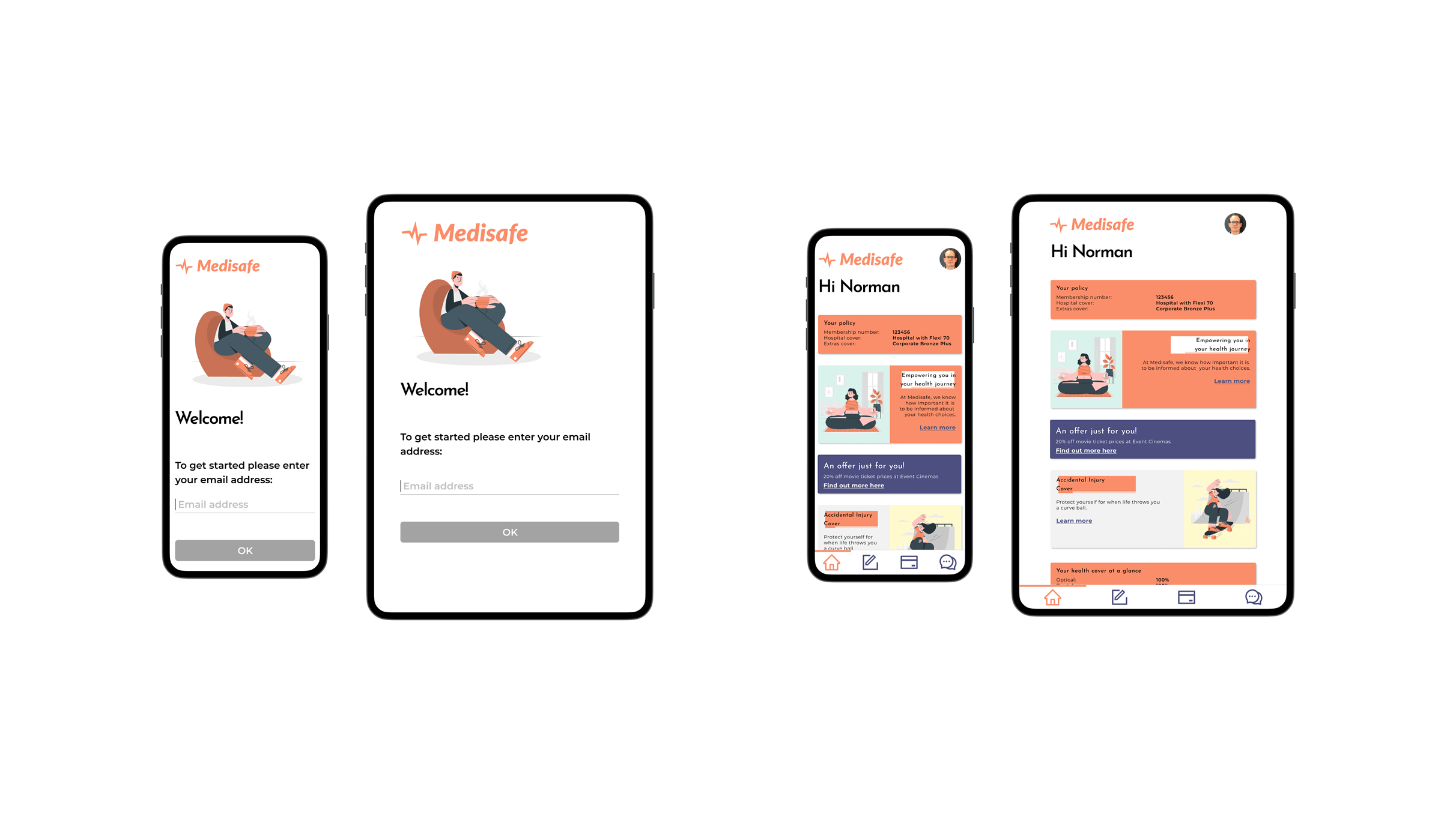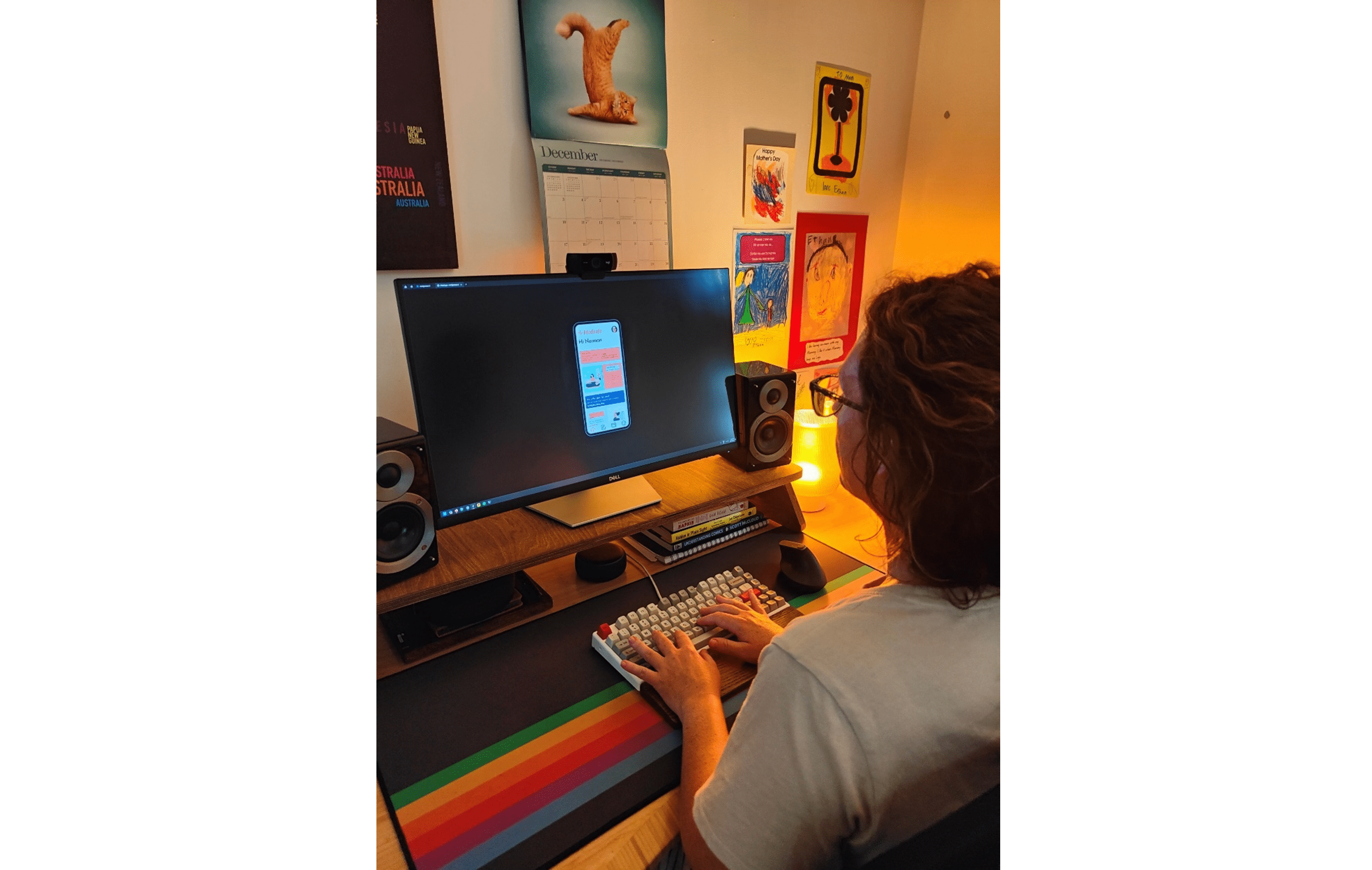Health Insurance (Part 2)
Overview
Medisafe, a fictional health insurance provider that primarily targets the 18 to 30-year-old market wants a mobile app with a seamless sign on experience.
As a UI Designer, I’ve been given the brief to create a mid-fidelity prototype to demonstrate sign on tailored to the tech-savvy audience Medisafe caters to.









